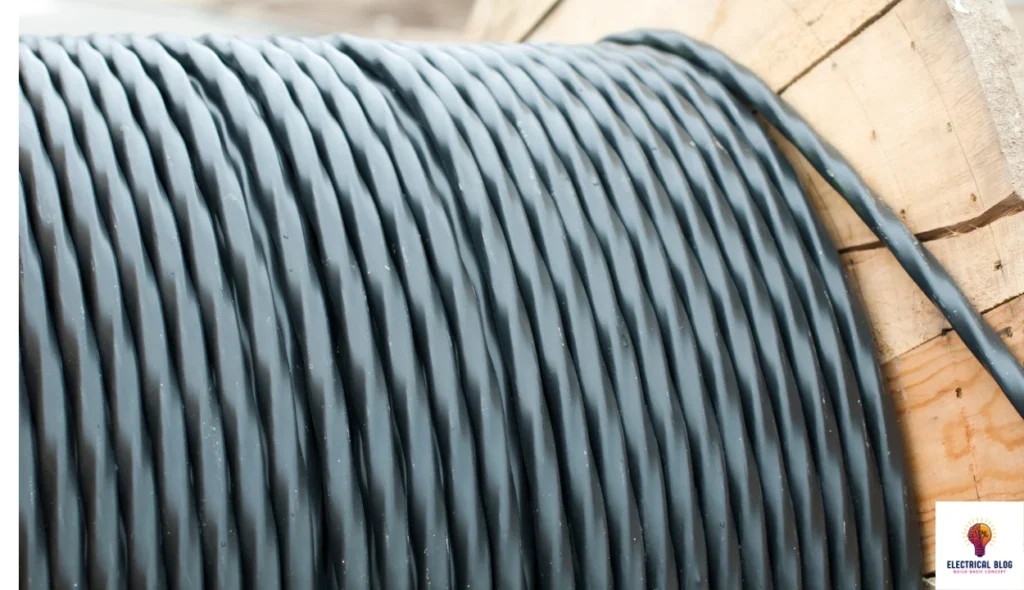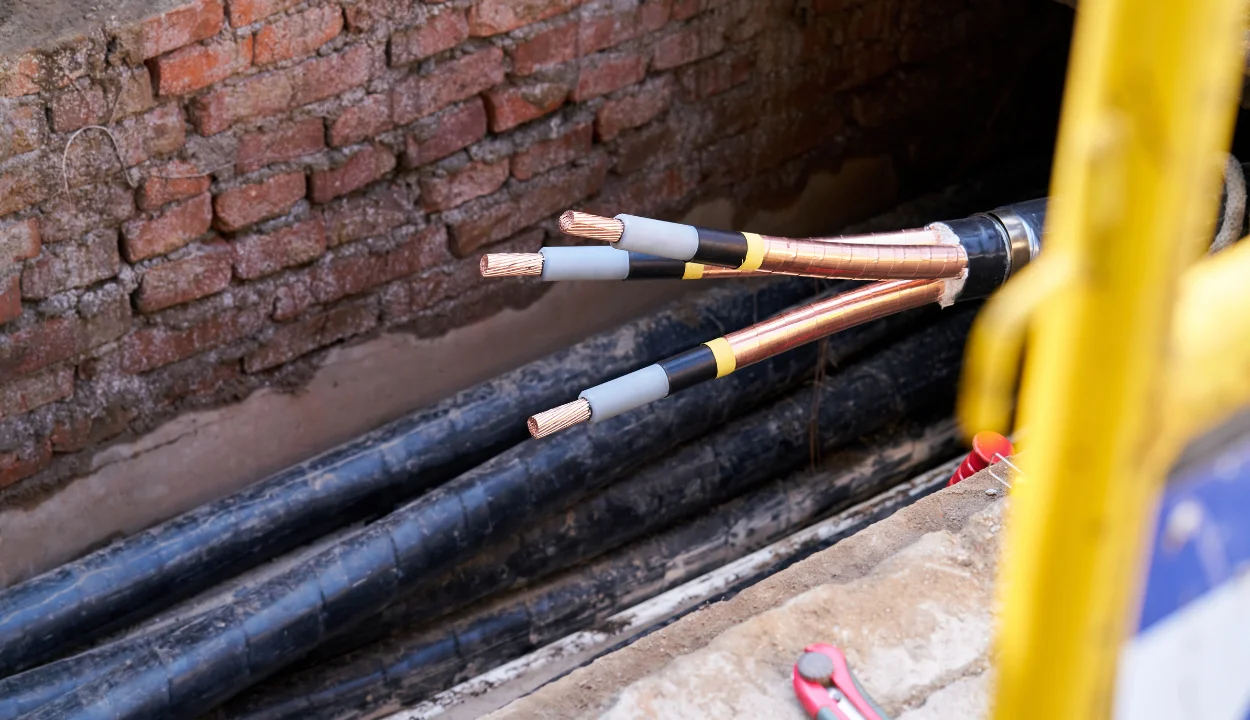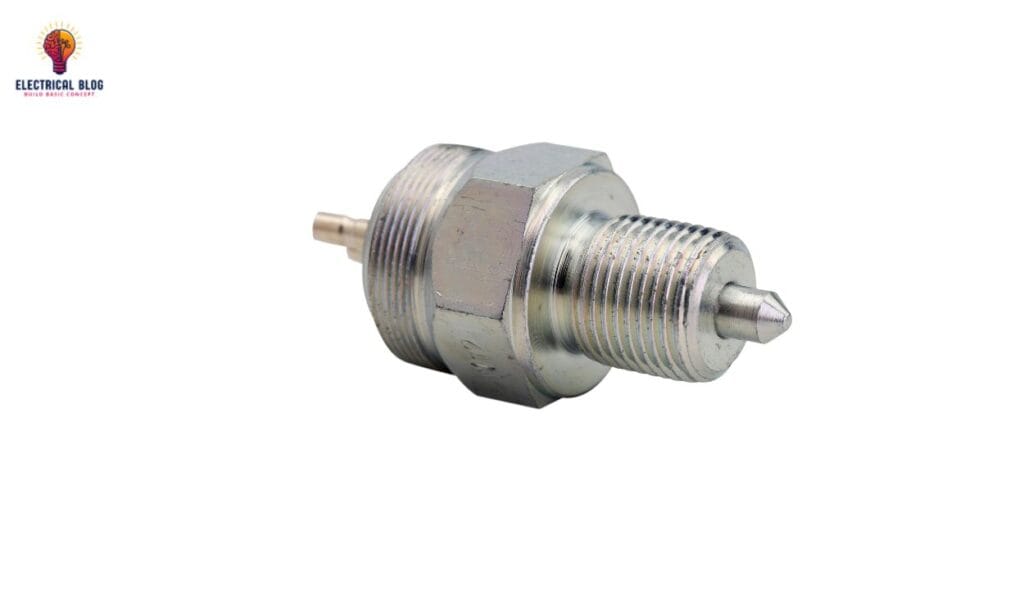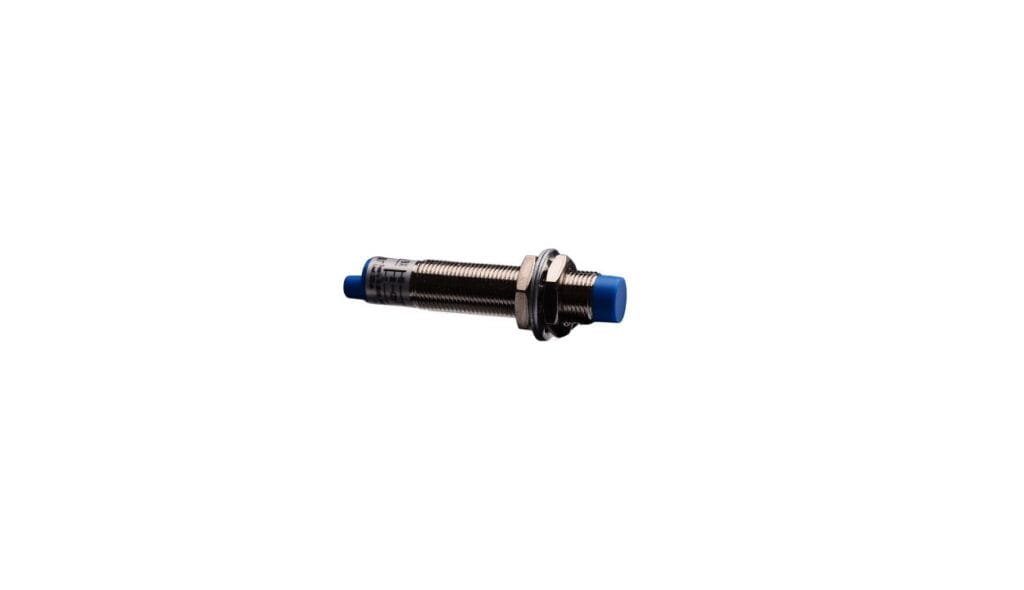Introduction
In modern power systems, ensuring the safe transmission of electricity is crucial for the consumer. Unlike overhead lines, underground cables are placed beneath the Earth’s surface to handle environmental challenges. These cables are covered with protective layers to protect them from external conditions and ensure long-term performance.
The construction of these underground cables is carefully designed to manage insulation resistance and other critical factors. Each cable is developed using various types of insulation to improve resistance and durability. As someone experienced in this field, I’ve seen how this construction greatly benefits the consumer by enhancing reliability and making the cables less visible.
What are underground cables?
Underground cables are essential for the transmission and distribution of electricity, especially in urban areas. Unlike overhead lines, these buried cables offer several benefits, including improved appearance and fewer disturbances caused by weather or storms. Their protective design helps reduce the risk of faults and outages, making them highly reliable for demanding networks.
The construction of these underground cables involves advanced insulation materials like XLPE and EPR, which effectively protect them from moisture, corrosion, and other environmental risks. This insulation helps the system manage high voltages safely, minimizing the chance of issues if a fault occurs. However, installation is often more expensive, and detecting faults can be challenging since they are not easily located.
Despite their costly nature, underground cables are a better option in situations where overhead power lines are impractical or restricted by safety concerns. They are ideal in spaces with trees, icy conditions, or areas prone to lightning. With their robust design and reduced maintenance requirements, these systems provide stable power for large networks while minimizing charging currents and ensuring efficient service.
Underground Electric Cables
From my experience in electrical systems, underground cables are designed to transport energy safely through wires and conductors. These cables are covered with insulation for protection and are often used in thickly populated areas where overhead lines are impractical. They can handle low, medium, and even extra-high voltages over longer distances when designed with proper requirements.
In earlier days, these cables were mainly for low and medium voltages, but nowadays they are developed for high quantities of electrical power. The combination of conductors with a protective cover ensures durability in challenging applications. Depending on the types, sizes, and shapes, these cables can efficiently carry signals and energy over longer distances with minimal loss. You can also read types of underground cables.
Structure of Underground Cable
In my experience working with underground cable systems, each cable is designed with several layers to ensure safety and efficiency. At the core lies the conductor, typically made of copper or aluminum, which incorporates the electric current. Surrounding this is insulation, often built using polyethylene or cross-linked polyethylene, offering both protection and durability.
The insulation is further encased in a metal shield for grounding and security from interference. An outer jacket, commonly made from PVC or similar fabric, provides mechanical strength and shields the cable from moisture and environmental factors. This structure effectively consists of vital elements, ensuring reliable performance in demanding conditions. You can also read Grounding Transformer.
Underground Cable diagram
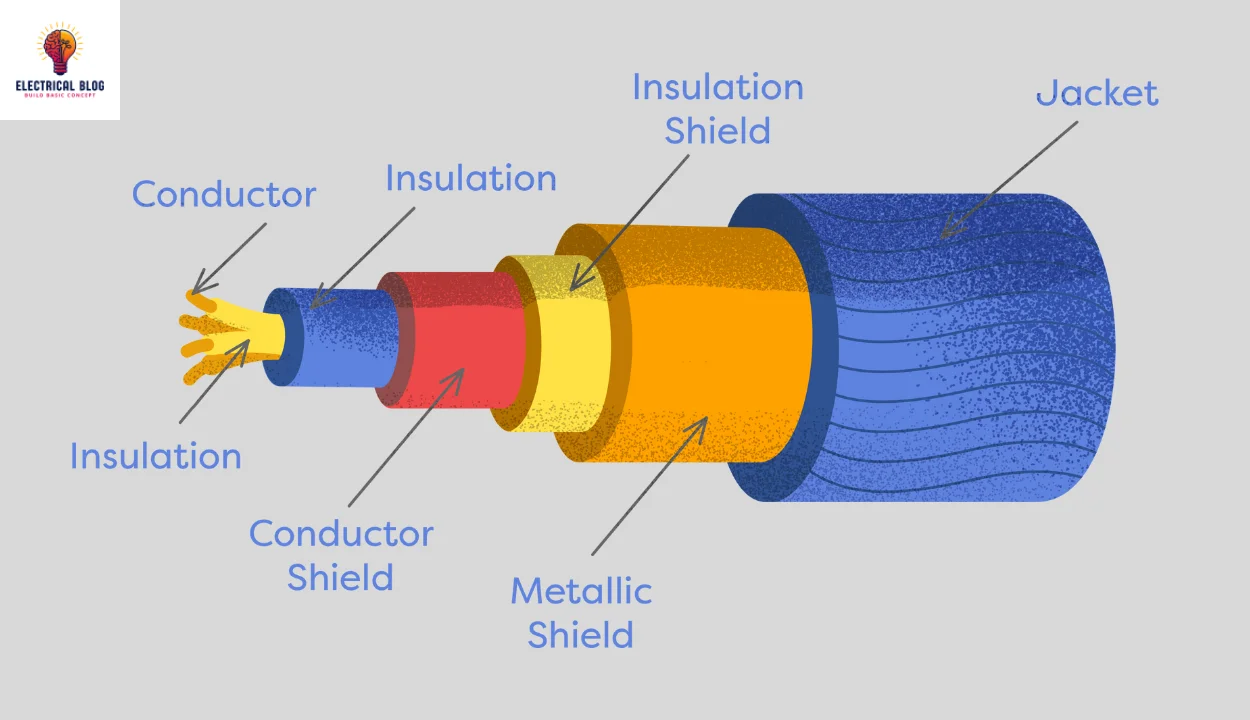
Requirements of Underground Cable
Underground cables must meet specific requirements to ensure safety and performance. The conductor should be stranded and made of copper or aluminum for better flexibility and durability. Its size must be reasonable enough to carry the required load without overheating.
The cable should have enough thickness in its insulation to maintain reliability and resist damage. For added protection, a mechanical layer is provided to help it withstand rough use. Using stable materials with strong chemical and physical properties further ensures long-term performance. You can also read electric pole.
Cable Joints as a Connector
In my experience with underground cable installations, cable joints are crucial for joining different segments securely. These connectors ensure a reliable connection, allowing continuous power transmission across networks. Each joint is carefully designed with specialized materials to maintain the integrity of the electrical circuit.
For added protection, these joints are installed to resist environmental factors like moisture, temperature changes, and mechanical stresses. This secure setup plays a crucial role in maintaining system performance and ensuring longevity. Using proper insulation and conductive materials further improves the system’s durability.
Properties of Insulating Materials Used for Underground Cables
Insulating materials should have high insulation resistance to prevent leakage current and ensure durability.
They must possess high dielectric strength to avoid breakdown during high voltages.
Strong mechanical properties, including tenacity and elasticity, are needed to resist stress.
The material should be non-inflammable to reduce fire risks.
It must have a low coefficient of thermal expansion to prevent damage due to temperature changes.
The material should be capable of withstanding high rupturing voltages for safety.
The cost of the insulating material should be economical to stay affordable.
It must be immune to acids and alkalis to prevent chemical damage.
Using non-hygroscopic materials is essential to avoid absorbing moisture from the air.
If hygroscopic materials are used, they must be enclosed in a water-tight covering such as a lead sheath.
The material should perform reliably in operating temperatures ranging from −18°C to 94°C.
To improve efficiency, it must also have a low power factor to reduce energy losses.
General Construction of Underground Cables
Core
The core of an underground cable is made from tinned copper or aluminum to improve flexibility and performance. Depending on the usage, the cable may have one or more cores to suit different service needs.
Insulation
Each core is wrapped with insulation using materials like impregnated paper, rubber mineral compound, or varnished cambric to prevent moisture damage. The thickness of the insulating materials is carefully selected to match the operating voltage.
Bedding
To protect the insulation, a copper sheath or lead sheath is positioned over it to resist corrosion and acids in the soil or atmosphere. This sheath also prevents exposure to harmful gases and alkalis.
Metallic Sheath
A bedding layer made of fibrous material, such as jute is added to prevent mechanical damage. This layer supports the armoring that follows, which consists of galvanized steel wire or steel tape for added strength.
Armouring
The armouring acts as a shield to protect the cable from injuries and harsh conditions. Depending on the type, it may have one or two layers for improved durability.
Serving
Finally, a protective serving layer, often made of jute, is applied over the armoring to guard against environmental exposure. This final layer ensures the cable remains safe and durable throughout its lifespan.
Construction of Different Underground Cables
Single Core
Two Core
Three Core
Four Core
Low Tension Underground Cables
Single-core cables
Multi-core cables
Single-core (L.T) Cable
The Single-core LT Cable is designed for voltages up to 1000 volts and is constructed with a circular core made of tinned stranded copper or aluminum. This conductor is insulated with layers of impregnated paper to protect it from moisture. A lead sheath surrounds the insulation to prevent the entry of water and resist corrosion. An overall serving of compounded fibrous material like jute further enhances durability. This design ensures simple installation, minimal electrostatic stresses, and the availability of a larger conductor section for improved performance.
Multi-core (L.T.) Cables
Multi-core cable designs include shaped conductors or round conductors, each offering unique benefits. Shaped core designs use different diameters to avoid undue waste of space, improving the copper space factor. Each core is insulated with impregnated paper, and belts are provided for added strength. A layer of wire armoring is applied over the belts, and the cable is finished with compounded fibrous material for protection. These cables are used for voltages up to 6,600 volts and are commonly shown in technical figure references.
High Tension Underground Cables
(H.T) High Tension Underground Cables are designed to handle high voltages like 22 kV and above. These cables are often constructed as 3-core belted cables with a non-circular shape to make better use of available space. Each core is covered with paper insulation, and gaps are filled with fibrous material such as jute for a circular cross-section. The lead sheath protects the cable from moisture and mechanical injury, while armoring adds extra protection. To avoid leakage current, screened cables with metallic screens are used to safely conduct the current to Earth.
Features:
Designed to handle 22 kV and beyond under high-stress conditions.
Equipped with screened cables to avoid harmful leakage currents.
Uses belt paper and impregnated paper tape for improved insulation resistance.
Includes an outer serving for added protection against heat and damage.
Super Tension Cables
H-Type
S.L. Type
HSL Type Cable
H-type Cables
H-Hochstadter first designed the H-type cable, and its full form is derived from his name. It is a 3-core cable where each core is insulated with impregnated paper and covered with a metallic screen like aluminum foil. These metallic screens are designed to stay in contact with each other, improving performance. An extra conducting belt is wrapped around the three cores to enhance stability.
Unlike belt-type insulating, this cable is provided with a lead sheath, bedding, armoring, and serving for extra protection. The screens and one conducting belt maintain earth potential, ensuring electrical stresses remain radial, reducing dielectric losses. The perforations in the metallic screens allow complete impregnation, which helps avoid the entry of air and boosts the heat-dissipating capacity for better performance.
SL Type Cable
The SL Type Cable is similar to an H-type cable, but each core is enclosed with its lead sheath instead of a common overall lead sheath. This design creates three cores that act as separate single-core cables, improving flexibility. This cable is used for systems up to 66 kV and is commonly shown in constructional details for better understanding. For extra durability, armoring and serving are also provided.
One major advantage is that bending the cables becomes easy since there is no overall lead sheath. It also reduces the risk of core-to-core breakdown and minimizes oil leakages on hilly routes by eliminating filler spaces containing compounds. However, manufacturing thinner lead sheaths is difficult, making the production process more challenging.
HSL Type Cable
The HSL cable is a special combination of H cables and SL cables designed for improved performance. It includes three cores, each insulated with impregnated paper and metalized paper for extra durability. The cores are laid up with filler material, then sheathed with lead, braided, armored, and finally served for protection. This construction ensures better strength and reduces possible damage.
Screened cables in this design have more core-to-core thickness, reducing the possibility of core-to-core faults. The electrical stresses in these cables remain uniformly radial, improving insulation performance. The improved current capacity helps with better dissipation of heat. Since the electrical stresses are limited to the homogeneous paper, they prevent voids in the electric field, enhancing reliability.
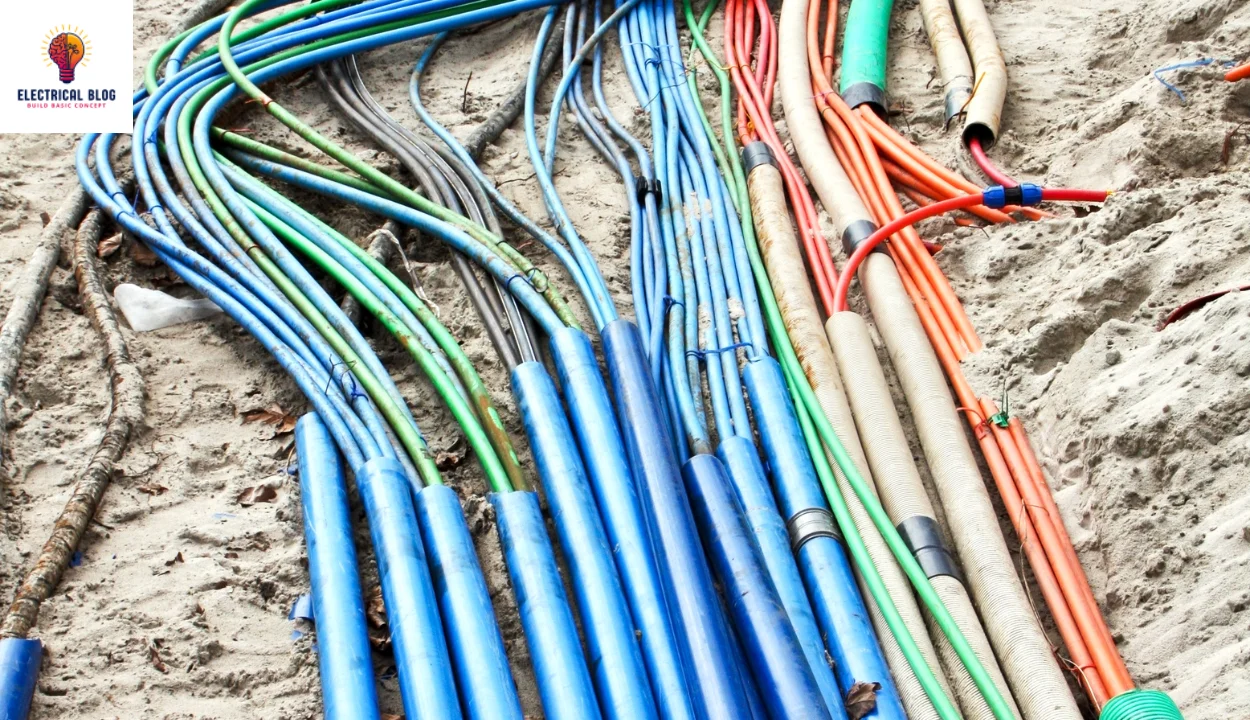
Extra High Tension Cables
Extra High Tension Cables are specially designed for operating voltages beyond 66 kV. Traditional solid-type cables are unreliable at such voltages due to the presence of voids, which may cause breakdowns in the insulation. To prevent this, pressure cables are used, where increasing the pressure of the compound helps eliminate these voids. The two main types are Oil-Filled Cables and Gas-Pressure Cables, both designed to handle extreme conditions efficiently.
Oil-Filled Cables
Oil-filled cables are specially designed to handle greater voltage stress and improve performance. Each single-core cable has a conductor wire wound around a spiral tape that creates a cylindrical channel. This channel is filled with oil under oil pressure and supplied through an external reservoir. When the cable temperature rises, the expanded oil is collected in the reservoir, and when the temperature falls, it flows back into the oil ducts. This process helps prevent void formation and maintains proper impregnation.
The metallic sheath protects the cable from damage, while perforated metal ribbon tubing improves heat flow. These cables are located in submarine cable, bridge, and vertical shaft systems for added safety. Their greater working temperature and greater current-carrying capacity make them superior to solid cables. With a smaller size and reduced dielectric thickness, they are easier to install and maintain. In case of a defect, oil leakage makes it easier to identify the problem, ensuring quick repairs.
Gas Pressure Cables
Gas Pressure Cables use nitrogen gas or other inert gases to exert pressure on the paper dielectric and prevent void formation. These cables are available in two forms — External Gas Pressure Cables and Internal Gas Pressure Cables. The construction is similar to ordinary solid-type cables but shaped in a triangular cross-section for reduced weight and improved thermal resistance. The cable is laid inside a gas-tight steel pipe for protection, and a thin metal tape acts as a membrane for added security. This design helps maintain stability during temperature changes.
These cables can handle maximum stress levels like 10 kV/mm or 100 kV/cm efficiently. They can carry twice the load current and operate at 15 atmospheres of pressure, outperforming normal cables. The nitrogen gas also helps in quenching any flame, improving safety. Despite their small size and 75% reduced thickness, these cables have a high installation cost. However, their low maintenance cost makes them a reliable solution for high-performance systems.
Specifications of Underground Cables
When selecting underground power cables, several important factors must be specified to ensure safe and efficient operation. The following points highlight key specifications for these cables:
The voltage range for which the cable is intended to be used should be carefully chosen.
The number of cores is important as it determines the cable’s ability to manage circuits.
The current carrying capacity must meet system demands to avoid overheating.
For L.T. cable, the continuous current rating is a vital specification to consider.
For H.T. cables, both continuous and short-circuit current ratings are crucial for performance.
The type of insulation compound used greatly impacts durability and protection.
Proper sheathing and armoring are essential to safeguard the cable from physical damage.
Depending on the system, cables may need compatibility with earthed neutral or unearthed neutral system setups.
Categories of Underground Cable Based on Voltage or Construction
Voltage
Underground cables are classified based on voltage levels or construction type for different transmission needs. Low Voltage Cables are designed for homes and small business setups with ratings up to 1 kV. Medium Voltage Cables handle voltage levels from 1 kV to 36 kV for various business or application packages. High-voltage Cables are engineered for distribution networks with voltage ranges above 36 kV to manage heavy power loads. Selecting the best cable depends on system demands for reliable performance.
Construction
For construction, Single-Core Cables use one conductor with insulation and are ideal for specific applications. Multi-core cables have multiple conductors in a single sheath, transmitting multiple levels in one cable. Armored cables offer mechanical protection with steel cords or protective armor against external elements. Meanwhile, unarmored cables rely on insulating layers to guard conductors and withstand environmental factors safely.
Insulation Resistance of Underground Cables
The insulation resistance of a cable helps prevent leakage current by offering opposition through a suitable thickness of insulation material. In a single-core cable, the conductor radius is r1, and the internal sheath is r2. A small layer of thickness dx at radius x offers resistance to the flow of current.
The formula for insulation resistance is:

Here, R is the resistance in megaohms, ρ is the resistivity, and resistance is inversely proportional to the length of the cable.
Causes of Failure of Underground Cables
Several factors can cause underground cables to fail, affecting their performance and lifespan. The following are common reasons for cable failure:
Environmental factors like moisture, temperature variations, and chemical exposure can weaken cable insulation.
Mechanical stress from ground movement, construction activities, or improper installation can damage the cables.
Insulation materials may degrade over time, resulting in electrical breakdown and eventual failure.
Faulty joints or poorly executed terminations can cause increased resistance, leading to overheating.
Rodent damage occurs when animals chew or dig through the cable insulation, causing a compromise in performance.
Electromagnetic fields or nearby power lines may interfere with cable performance, creating a risk of failure.
Manufacturing defects in cables may lead to premature failure, especially in high-stress environments.
Aging and wear naturally affect the integrity of underground cables, increasing their vulnerability to damage.
Conclusion
In conclusion, underground cables play a crucial role in ensuring reliable power transmission across various applications. However, they are prone to several risks, such as environmental factors, mechanical stress, and insulation degradation. Moisture, temperature changes, and chemical exposure can harm cable insulation. Also, problems like bad joints, sloppy terminations, and rodent damage raise the chances of failure.
To maintain their integrity, it is essential to select the right insulation materials, ensure proper installation, and regularly inspect cables for signs of wear or aging. With these strategies, underground cables can operate efficiently and deliver reliable performance over time.

